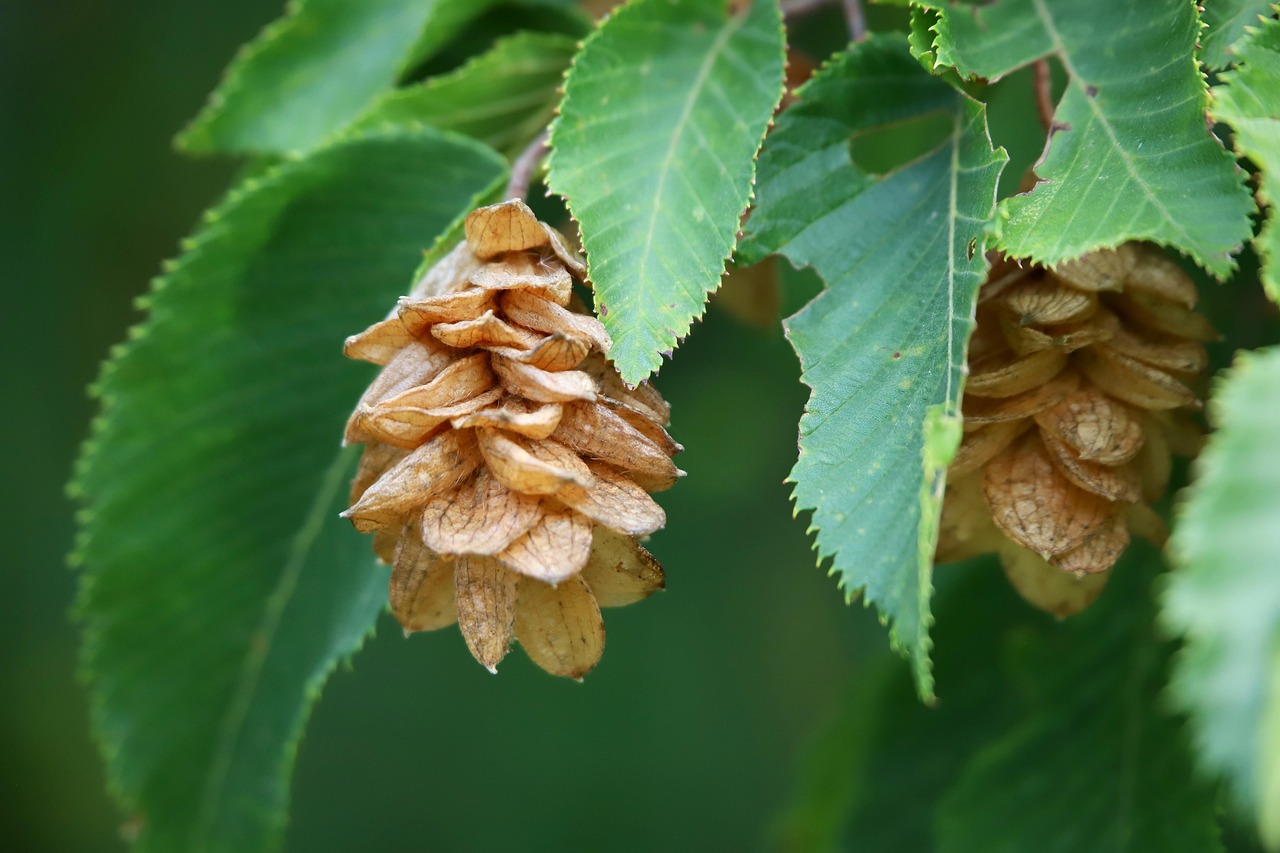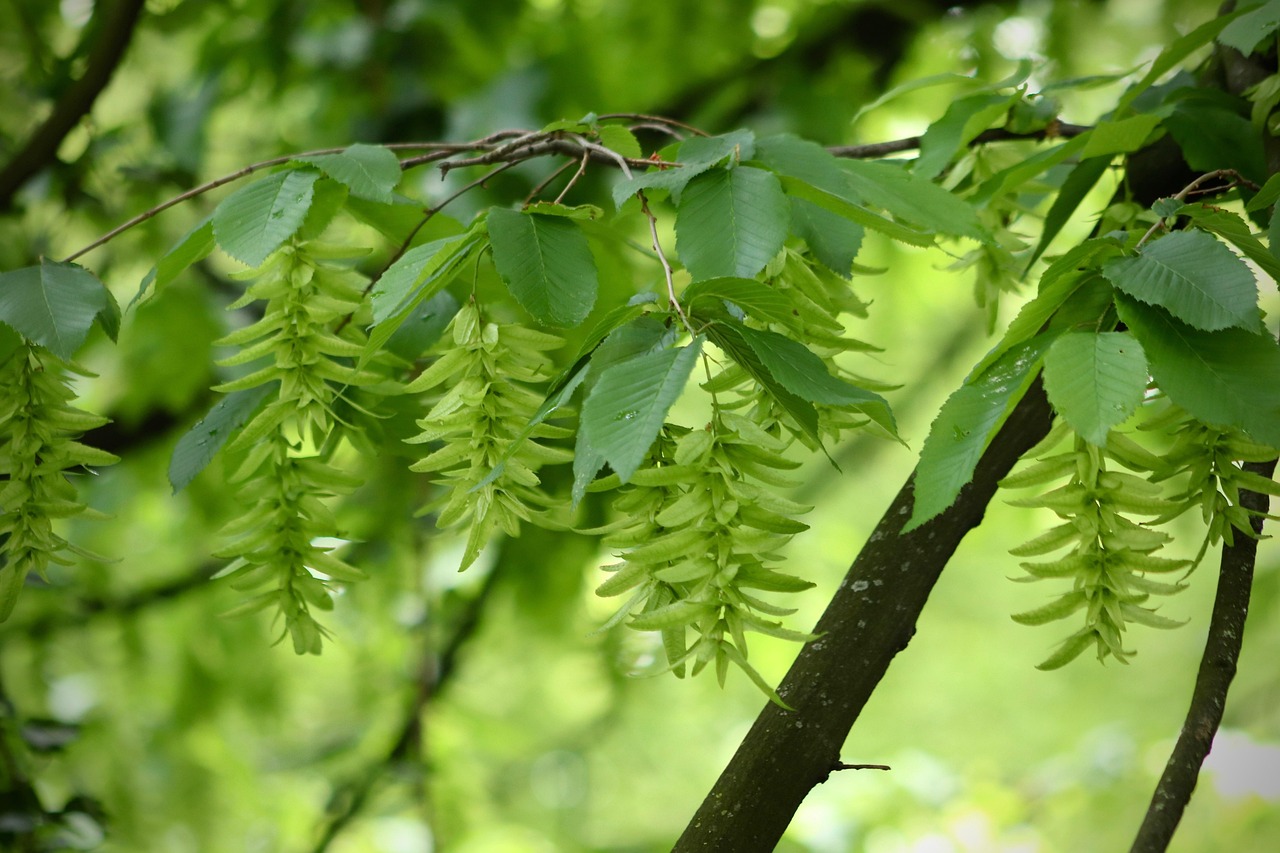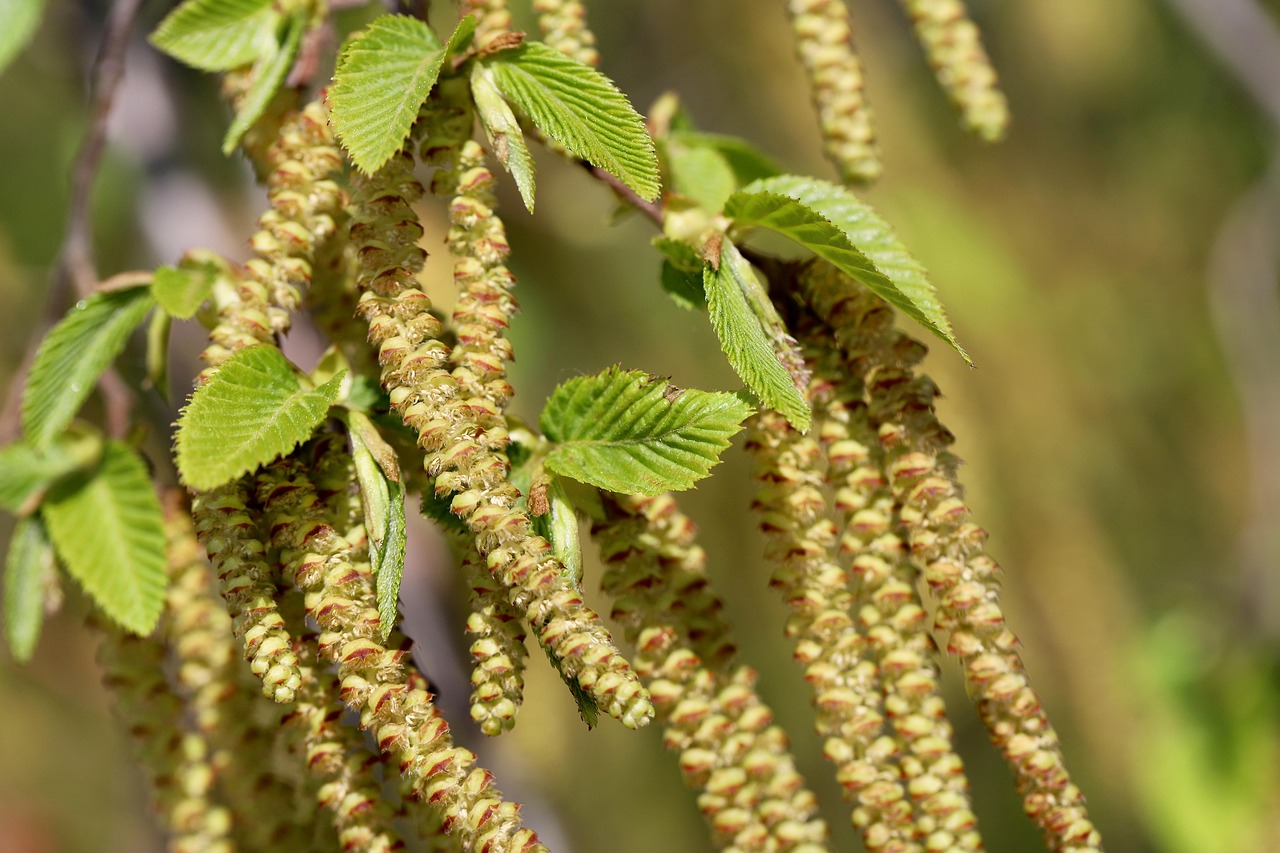The hornbeam tree, known for its dense foliage, typically grows at a moderate rate of 12 to 24 inches per year. This growth rate allows it to quickly establish a lush canopy, providing effective shade in urban landscapes and gardens.
The hornbeam tree, belonging to the Carpinus genus, is a popular choice for many landscape designs. With its attractive foliage and sturdy structure, it makes an excellent choice for both aesthetic and functional purposes. This tree is particularly valued for its ability to thrive in various soil conditions and its resilience against adverse weather conditions. Many homeowners and landscapers appreciate the hornbeam for its potential to create shaded areas, enhancing outdoor spaces.

One of the key characteristics of the hornbeam tree is its dense foliage. The leaves are serrated and take on a rich green color during the growing season. This dense canopy not only provides shade but also serves as an effective windbreak. Additionally, the tree’s ability to adapt to urban environments makes it a favorite among city planners looking to improve green spaces.
Understanding Hornbeam Growth
The growth rate of a hornbeam tree can be influenced by several factors. These include soil quality, moisture levels, sunlight exposure, and overall care provided to the tree. Generally, hornbeams are known to prefer well-drained soils and can tolerate a range of pH levels. Below are some essential factors that can affect their growth:
- Soil Conditions: Hornbeam trees thrive in loamy or sandy soils but can adapt to clay soils as well.
- Moisture: Regular watering during dry spells is crucial for optimal growth.
- Sunlight: While hornbeams can tolerate partial shade, they grow best in full sun conditions.
- Spacing: Adequate spacing between trees allows for better air circulation and growth.
The hornbeam’s growth can be categorized into different phases. In the initial years, the tree focuses on establishing a robust root system. During this time, the above-ground growth may seem slow. However, once established, the hornbeam can exhibit rapid growth, especially in favorable conditions.

The following table outlines some key growth metrics for hornbeam trees:
| Growth Phase | Height (Inches) | Years to Maturity | Average Annual Growth (Inches) |
|---|---|---|---|
| Establishment | 0 – 24 | 1 – 3 | 6 – 12 |
| Early Growth | 24 – 60 | 4 – 8 | 12 – 18 |
| Mature Growth | 60 – 120 | 9 – 15 | 24 – 36 |
The hornbeam tree is also known for its adaptability. It can thrive in varying climates, from temperate regions to areas with cooler temperatures. This adaptability contributes to its widespread use in landscaping projects across different geographical areas.
In addition to providing shade, hornbeam trees offer ecological benefits. They create habitats for various wildlife and contribute to the overall health of the ecosystem. Their dense foliage serves as a shelter for birds and small animals, while their roots help prevent soil erosion.

Caring for a hornbeam tree involves regular maintenance practices such as watering, pruning, and monitoring for pests. Proper care not only ensures healthy growth but also enhances the tree’s ability to provide shade and dense foliage over time.
The hornbeam’s appealing structure and foliage make it an excellent addition to any landscape. Whether used as a standalone specimen or as part of a hedgerow, this tree adds beauty and functionality to outdoor spaces.
Factors Influencing Hornbeam Tree Growth
The growth rate of hornbeam trees can vary significantly based on several environmental and biological factors. Understanding these factors is essential for anyone looking to cultivate healthy hornbeam trees. Below are some key elements that play a crucial role in the growth of hornbeam trees:

Soil Quality
Soil quality is one of the most critical factors affecting the growth of hornbeam trees. The tree prefers well-drained soils that are rich in organic matter. Here are some specific soil characteristics that benefit hornbeam growth:
- pH Level: Hornbeam trees generally thrive in slightly acidic to neutral pH levels (around 6.0 to 7.5).
- Nutrient Content: High levels of nitrogen, phosphorus, and potassium enhance growth.
- Drainage: Well-drained soil prevents root rot and promotes healthy root development.
Watering Needs
Water availability is another significant factor influencing hornbeam growth. While the tree is relatively drought-resistant once established, young trees require consistent moisture to develop a strong root system. Here are some watering guidelines:
- During the first year, water the tree deeply at least once a week.
- In prolonged dry spells, increase watering frequency to maintain soil moisture.
- Avoid overwatering, as this can lead to root diseases.
Light Requirements
Hornbeam trees can grow in various light conditions but prefer full sun to partial shade. Adequate sunlight is vital for optimal growth and dense foliage production. Consider the following light needs:
- Full Sun: At least six hours of direct sunlight daily promotes vigorous growth.
- Partial Shade: Hornbeams can tolerate some shade but may grow slower and produce less foliage.
Pest and Disease Management
Maintaining the health of hornbeam trees involves vigilance against pests and diseases. Common issues include:
- Aphids: These small insects can cause leaf curling and weaken the tree.
- Caterpillars: They can defoliate the tree if not controlled.
- Fungal Diseases: Root rot and leaf spot diseases can affect overall health.
Regular monitoring and treatment can keep these pests at bay. Here are some management strategies:
- Inspect trees regularly for signs of pests or disease.
- Use insecticidal soap or neem oil for insect control.
- Apply fungicides when fungal diseases are detected.
The Role of Pruning in Growth
Pruning is an essential aspect of maintaining hornbeam trees. Proper pruning encourages healthy growth and enhances the tree’s aesthetic appeal. Key benefits of pruning include:
- Encourages Airflow: Pruning helps improve air circulation within the canopy, reducing disease risk.
- Shapes the Tree: Regular pruning maintains a desirable shape and size.
- Promotes New Growth: Cutting back older branches stimulates new growth, enhancing density.
The best time to prune hornbeam trees is during late winter or early spring before new growth begins. This timing minimizes stress and promotes healing.
Cultural Practices for Enhanced Growth
Cultural practices such as mulching and fertilizing significantly impact hornbeam growth. Here are some recommended practices:
Mulching
Applying mulch around the base of the tree helps retain soil moisture and suppress weeds. Recommended mulch materials include:
- Bark mulch
- Pine needles
- Wood chips
Fertilizing
A balanced fertilizer can provide essential nutrients, especially in nutrient-poor soils. Here are guidelines for fertilization:
- Use a slow-release fertilizer in early spring.
- Avoid over-fertilization, which can lead to excessive foliage at the expense of root development.
Implementing these practices can enhance the overall health and growth rate of hornbeam trees, ensuring they thrive for years to come.
Hornbeam Tree Varieties
There are several species of hornbeam trees, each with unique characteristics and growth habits. Understanding these varieties can help you choose the best option for your landscape needs. The most common types include:
- European Hornbeam (Carpinus betulus): This is the most widely planted species. It grows up to 40 feet tall and features dense foliage.
- American Hornbeam (Carpinus caroliniana): This smaller tree typically reaches heights of 20 to 35 feet. It is known for its beautiful fall color.
- Chinese Hornbeam (Carpinus turczaninowii): A less common species, it grows well in various conditions and is prized for its ornamental value.
Each variety offers distinct foliage and growth characteristics, making them suitable for different landscape designs. For instance, the European hornbeam is often used for hedging due to its dense growth habit, while the American hornbeam is favored for its adaptability to shaded areas.
Climate Adaptability
Hornbeam trees are known for their resilience and adaptability to various climate conditions. They can thrive in USDA hardiness zones 3 through 9, making them suitable for a wide range of environments. Here are some important aspects of their climate adaptability:
Cold Tolerance
The hornbeam tree is particularly cold-hardy. It can withstand harsh winters, making it an excellent choice for northern climates. Here are some benefits of this cold tolerance:
- Frost Resistance: Hornbeams can survive late spring frosts that may damage more sensitive plants.
- Winter Interest: The tree’s structure remains appealing during winter months, providing visual interest even when deciduous trees have lost their leaves.
Drought Resistance
Once established, hornbeam trees can also tolerate periods of drought. However, they perform best with regular moisture during their early years. Here are some points regarding drought resistance:
- The deep root system enables them to access water from deeper soil layers.
- In drought conditions, they may reduce leaf size to conserve water.
Common Uses of Hornbeam Trees
The versatility of hornbeam trees makes them suitable for various applications in landscaping and urban planning. Some common uses include:
Shade Trees
Due to their dense canopy, hornbeam trees are ideal for providing shade in parks and residential areas. They can help reduce temperatures in outdoor spaces, enhancing comfort during hot summer months.
Hedging and Screening
The thick foliage of hornbeam trees makes them excellent for creating privacy screens and hedges. Here are some tips for using hornbeams as hedging plants:
- Plant hornbeams close together to form a dense barrier.
- Regular pruning will maintain the desired height and shape.
Ornamental Features
The aesthetic appeal of hornbeam trees adds beauty to any landscape. Their attractive bark, unique leaf shape, and fall color make them a favorite among landscape designers.
Environmental Benefits of Hornbeam Trees
Hornbeam trees provide numerous environmental benefits that contribute to ecosystem health. Here are some key benefits:
- Biodiversity Support: Hornbeams provide habitats for various wildlife species, including birds, insects, and small mammals.
- Soil Health Improvement: The tree’s root system helps prevent erosion and improves soil structure.
- Carbon Sequestration: Like all trees, hornbeams absorb carbon dioxide from the atmosphere, helping mitigate climate change.
Pest Resistance and Maintenance Challenges
While hornbeam trees are generally hardy, they can face challenges related to pests and diseases. Understanding these issues can help ensure a healthy tree. Common pests include:
- Aphids: These small insects can affect leaf health but can be managed with insecticidal soap.
- Caterpillars: Certain species may defoliate the tree; manual removal or targeted treatments can be effective.
- Leaf Spot Diseases: Regular monitoring can help catch these issues early, allowing for timely treatment.
Maintaining healthy hornbeam trees requires ongoing care and attention to potential challenges. Regular inspections and appropriate treatments will support their growth and longevity.
Long-Term Care and Sustainability of Hornbeam Trees
To ensure the long-term health and sustainability of hornbeam trees, it is crucial to adopt a comprehensive care regimen. This includes monitoring for signs of stress, environmental changes, and the overall well-being of the tree. Here are some essential practices for long-term care:
Regular Monitoring
Consistent observation can help catch potential problems before they escalate. Here are aspects to monitor:
- Leaf Health: Inspect leaves for discoloration or wilting, which may indicate insufficient water or pest issues.
- Growth Patterns: Note any unusual stunted growth or dieback in branches.
- Pest Activity: Keep an eye out for insects, particularly during the growing season.
Soil Testing
Conducting periodic soil tests can provide valuable information about nutrient levels and pH. This helps in making informed decisions regarding fertilization and amendments needed to optimize growth.
Watering Practices
Even though hornbeam trees are drought-resistant once established, they will benefit from consistent watering during prolonged dry spells. It is best to water deeply but infrequently to encourage deeper root growth.
Enhancing Aesthetic Appeal with Hornbeam Trees
The hornbeam tree not only serves functional purposes but also enhances the aesthetic appeal of landscapes. Here are some ways to integrate hornbeams into various landscape designs:
In Urban Settings
In urban environments, hornbeam trees can be used for:
- Street Trees: Their resilience makes them suitable for planting along city streets, providing shade and improving air quality.
- Parks and Green Spaces: Hornbeams can create beautiful shaded areas in parks, where people can gather and enjoy nature.
In Residential Gardens
Homeowners can utilize hornbeam trees in their gardens in the following ways:
- Privacy Screens: Plant them closely together to form natural barriers that offer privacy from neighbors.
- Specimen Trees: Their unique structure makes them an attractive focal point in any garden.
Understanding the Economic Value of Hornbeam Trees
The economic benefits associated with planting hornbeam trees are noteworthy. They contribute to landscaping value and have several applications in timber production:
- Timber Quality: Hornbeam wood is dense and durable, making it valuable for furniture and flooring.
- Cost-Effective Landscaping: Due to their low maintenance needs and adaptability, hornbeams can be a cost-effective choice for landscaping projects.
The environmental services provided by hornbeam trees, such as carbon sequestration and habitat creation, also have significant long-term economic implications. By investing in these trees, communities can enhance their green infrastructure while reaping financial benefits.
Final Thoughts
The hornbeam tree stands out as a versatile and resilient species suitable for various landscaping applications. With its moderate growth rate and dense foliage, it provides both shade and aesthetic appeal. Understanding the factors influencing its growth, such as soil conditions, water needs, and pest management, is essential for anyone looking to cultivate this tree successfully.
Caring for hornbeam trees involves ongoing attention to their health, ensuring they continue to thrive in diverse environments. Their adaptability to different climates makes them a suitable choice for a wide range of landscapes, from urban settings to private gardens.
In conclusion, hornbeam trees not only enhance the beauty of outdoor spaces but also contribute environmentally and economically. By investing in proper care and maintenance practices, you can enjoy the many benefits these magnificent trees have to offer for years to come.
